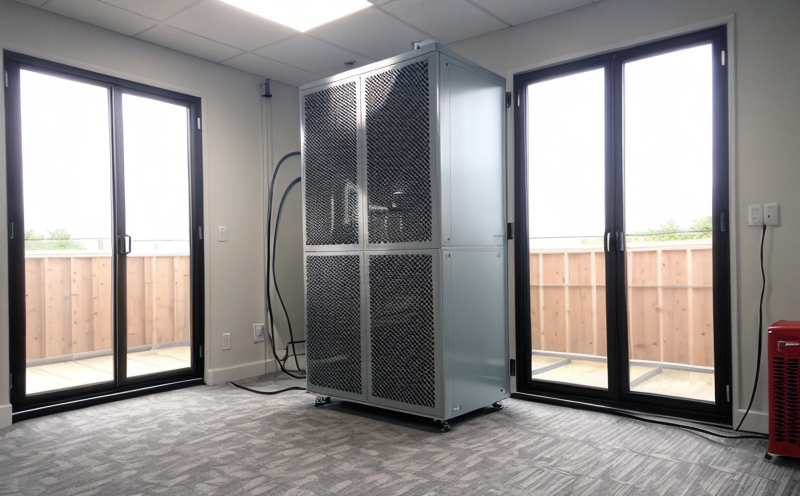DIN 1946-6 Ventilation System Flow Testing
The DIN 1946-6 standard is a comprehensive guideline that ensures the quality and safety of ventilation systems in buildings. This testing method focuses on the airflow within these systems, ensuring they function effectively to maintain indoor air quality and compliance with regulatory standards.
The process involves detailed measurements using specialized equipment designed to capture accurate data about the flow rates and pressures within the ventilation system. Compliance with this standard is crucial for various sectors, including healthcare facilities, commercial buildings, and residential complexes, where proper ventilation can prevent the spread of airborne contaminants and ensure occupant comfort.
The testing procedure typically begins with a thorough inspection of the ventilation system to identify any potential issues that could affect airflow. This includes checking the integrity of ductwork, ensuring there are no leaks or obstructions, and verifying that all components are correctly installed according to manufacturer specifications.
Once the initial assessment is complete, calibrated instruments are used to measure various parameters such as static pressure, differential pressure across filters, fan performance, and overall air flow through different sections of the system. The results are then compared against the requirements outlined in DIN 1946-6, which specifies acceptable ranges for these variables.
A detailed report summarizing all findings is generated at the end of the testing process. This document provides insights into the current state of the ventilation system and identifies any areas that require improvement or maintenance. It serves as a valuable tool for facility managers responsible for maintaining high standards of indoor air quality.
Regularly conducting tests according to DIN 1946-6 helps facilities maintain compliance with relevant regulations, safeguard public health, and ensure efficient operation of their ventilation systems. For those seeking detailed information about this testing service, our experienced team can provide comprehensive guidance tailored to individual needs.
Applied Standards
The DIN 1946-6 standard is widely recognized for its stringent requirements regarding ventilation system flow testing. It covers the entire lifecycle of a building's ventilation system, from design and installation to maintenance and operation.
This standard is particularly important in environments where air quality plays a critical role, such as hospitals, schools, offices, and other public spaces. By adhering to DIN 1946-6, facilities demonstrate their commitment to maintaining safe and healthy indoor environments for occupants.
The standard includes specific sections dedicated to different aspects of ventilation systems, including:
- Design considerations
- Installation procedures
- Performance evaluation
- Maintenance guidelines
These sections are designed to provide a holistic approach to ventilation system management, ensuring that all components work together seamlessly to achieve optimal performance.
Environmental and Sustainability Contributions
The implementation of DIN 1946-6 Ventilation System Flow Testing contributes significantly to environmental sustainability by promoting energy efficiency and reducing waste. By ensuring that ventilation systems operate at peak performance, this standard helps minimize unnecessary energy consumption and prolongs the lifespan of HVAC equipment.
Properly functioning ventilation systems contribute to better indoor air quality, which has direct benefits for human health and well-being. In addition, by reducing reliance on external sources of air conditioning or heating, these systems also help conserve natural resources.
The standard's emphasis on regular maintenance and timely repairs further supports environmental sustainability goals. Regular testing helps identify potential issues before they escalate into more serious problems, preventing costly replacements and minimizing the environmental impact of discarded equipment.
Use Cases and Application Examples
DIN 1946-6 Ventilation System Flow Testing finds application in numerous sectors where proper ventilation is essential for maintaining indoor air quality. Here are some specific scenarios:
- Hospitals: Ensuring that critical areas like operating rooms have optimal airflow to prevent the spread of airborne pathogens.
- Offices: Providing a comfortable working environment by balancing temperature and humidity levels effectively.
- Residential complexes: Guaranteeing energy-efficient systems that reduce utility bills without compromising comfort or safety.
In each case, the primary goal is to achieve a balance between efficient operation and environmental responsibility. By adhering to DIN 1946-6, facilities can ensure they meet these objectives while also contributing positively to their communities' overall well-being.





